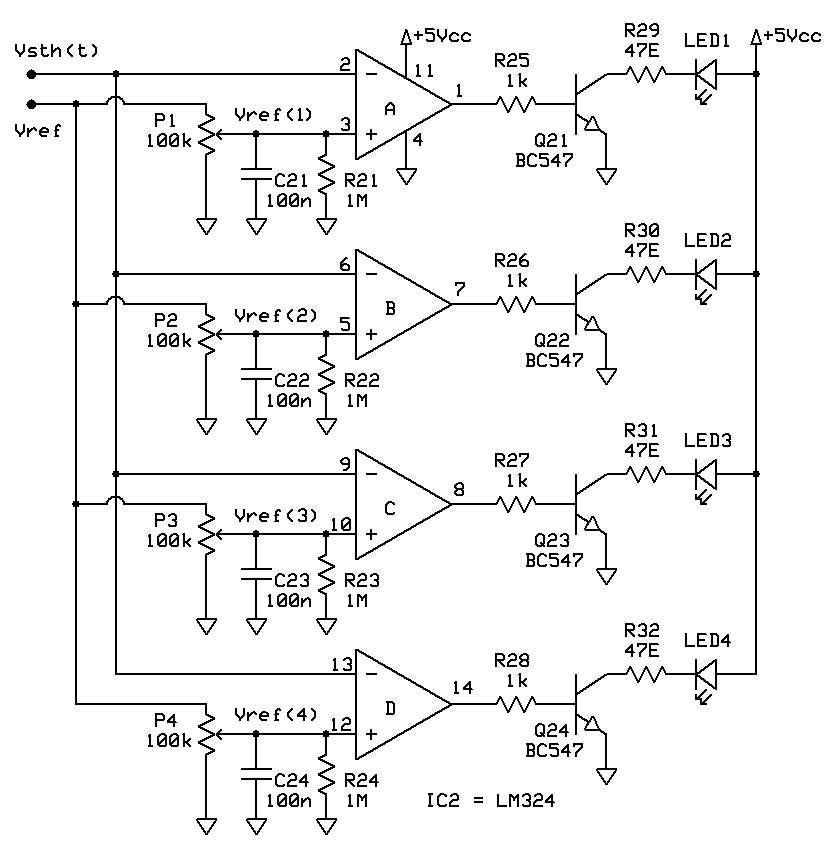Converting sawtooth into PWM signal
Once we have a clean sawtooth wave at hand, it is fairly easy to produce several independant PWM (Pulse Width Modulated) signals necessary for regulating optical output power of the LEDs. All we need is a bank of voltage comparators and a stable reference voltage.

Each of the comparators ("A" - "D") compares the momentary value of the sawtooth voltage Vsth(t) being generated by the sawtooth oscillator and fed to its inverting input to the individual reference voltage Vref(i) set by the accompanying potentiometer and fed to its noninverting input. If sawtooth signal voltage is higher than the reference voltage, as is the case in the initial part of each refresh period, comparator output is 0V and corresponding LED is off. As soon as sawtooth voltage becomes lower than a particular reference voltage, the comparator in focus switches its output to +Vcc, turning on the output transistor and consequently the LED connected to it. Permitted reference voltages that can be presented to particular comparators range from 0V to 2Vref; since sawtooth voltage varies inside the same bondaries, this means that it is possible to set each LED brightness from 0% to 100% of its maximum value.

Maximum LED current should be set for each LED individually by the resistor connected in series with it. Various LED have various specified maximum operating currents. Standard round 5mm LEDs should not be tortured with more than 20mA, while modern "200mW" square ones (sometimes reffered to as "Automotive LEDs") can withstand up to 50 or 70mA of DC current.
If the designer wants to use this circuit to drive 1W or 4W high power LEDs, then it is necessary to boost up the output stages by replacing small signal BC547 transistors either by
Darlington or
Sziklai bipolar transistor pairs or by N-type MOSFETs. The latter solution suffices for driving not only high power LEDs but also 12V or 24V halogen lamps, depending on current handling cappability of picked MOSFET models. If regulating halogen lamps, then it might be useful to set sawtooth generator refresh frequency to some lower value, e.g. 200Hz, as this leads to much lower power dissipation in output transistors caused by transitional switching looses while due to lamp inherent inertia there will be no observable flicker introduced. Frequency adjustments are best to be done by changing C
0 value according to the last formula given on the previous page.
LEDs and other light sources that are controlled by this regulator need not to be powered from the same stabilised +5V supply that IC1 and IC2 operational amplifiers are powered from, and it should certainly not be the case if halogen lamps are in question.


